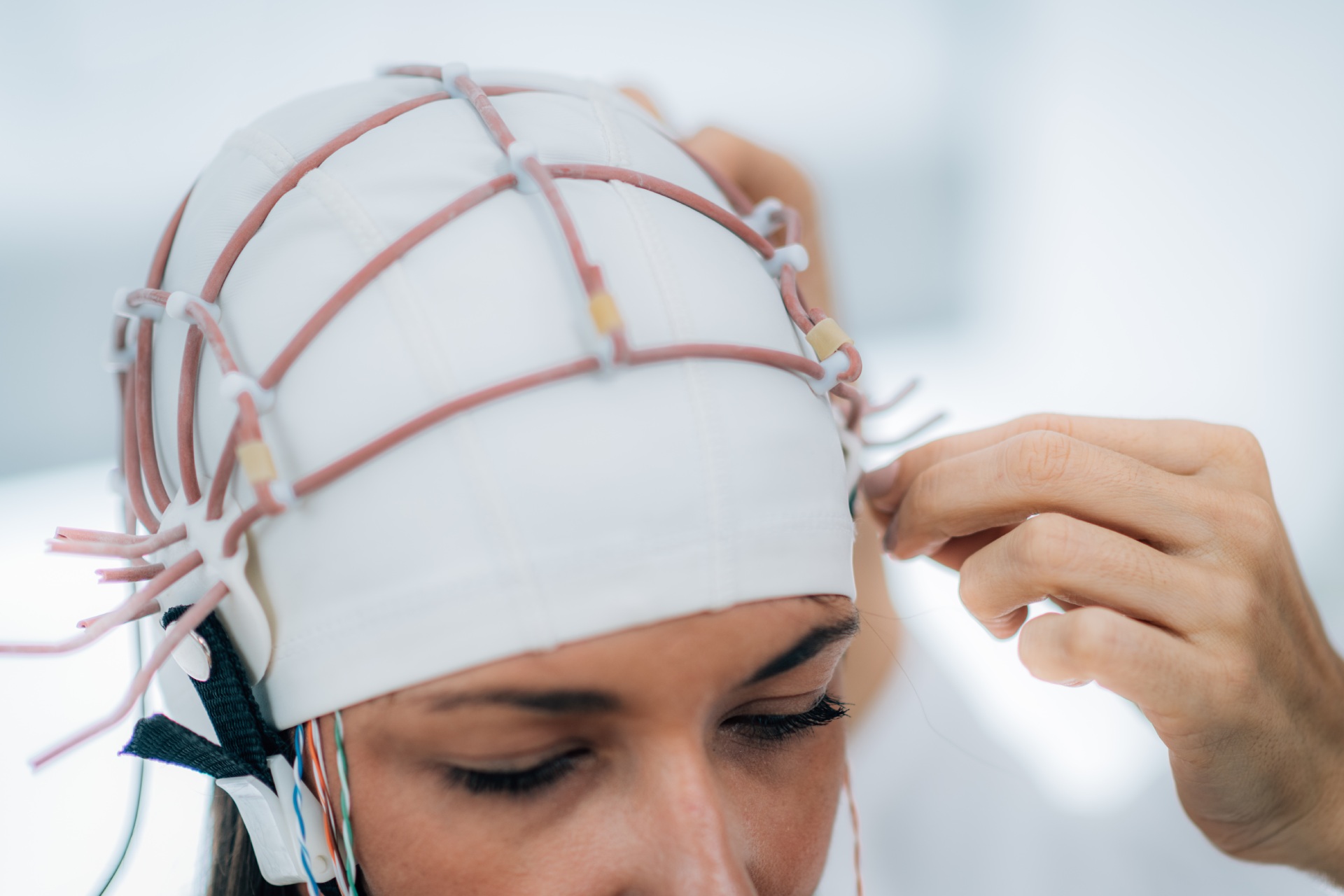
Depression profoundly affects quality of life, and several approaches can help alleviate its symptoms. While psychotherapy remains a proven method—with 75% of individuals who begin treatment reporting positive results—neurofeedback is increasingly gaining attention as an alternative or complement. How do these treatments work? Are they complementary? This article explores the differences between psychotherapy and neurofeedback to better understand their role in improving depressive symptoms.
WHAT IS NEUROFEEDBACK?
Neurofeedback is a non-invasive therapeutic approach based on real-time measurement of brain activity, typically using an electroencephalogram (EEG). The goal is to train the brain to better self-regulate through a learning process driven by feedback. With the help of visual or auditory signals (animations, games, sounds), the brain learns to modulate its brainwaves to achieve a more stable and functional state.
This technique is beneficial for regulating emotions, improving focus, reducing impulsivity, and other signs of depression. It is a non-invasive approach that can optimize the effectiveness of medication.
Neurofeedback requires multiple regular sessions to induce lasting changes. For this reason, it is often recommended as a complement to psychotherapy, strengthening therapeutic effects by acting directly on brain mechanisms.
WHAT IS PSYCHOTHERAPY?
Psychotherapy is a process based on verbal, emotional, and relational interaction with a trained professional. It aims to help the individual understand their thoughts, emotions, and behaviors to promote psychological well-being. It allows exploration of the deeper causes of suffering, whether linked to life events, inner conflicts, or recurring mental patterns.
Depending on the type of therapy—cognitive-behavioral, psychodynamic, humanistic, etc.—psychotherapy can help develop concrete tools to manage stress, emotions, relationships, and everyday challenges better. It fosters resilience, autonomy, and self-awareness.
Although effective, psychotherapy requires a strong personal commitment. Its effects may take time to manifest, especially with more introspective approaches. Combining psychotherapy with neurofeedback may therefore be recommended to improve depressive symptoms.
COMPARISON BETWEEN NEUROFEEDBACK AND PSYCHOTHERAPY IN THE TREATMENT OF DEPRESSION
Understanding how neurofeedback works versus psychotherapy is essential to determine the most suitable method for depression. In some cases, these approaches are used independently. However, far from being opposed, neurofeedback and psychotherapy can effectively complement each other, with each method reinforcing the other’s benefits when combined.
MECHANISM OF ACTION
Psychotherapy works “from the mind to the brain,” modifying thoughts, emotions, and behaviors to influence brain functioning. A typical session takes place face to face, with the therapist listening to the patient, encouraging free expression, and asking open-ended questions to promote reflection. In contrast, neurofeedback works “from the brain to the mind,” targeting brain electrical activity directly and enabling the brain to self-regulate through real-time feedback. Specialized equipment is used to capture and analyze brainwaves to train the brain.
FOCUS
Psychotherapy focuses on exploring and transforming mental and emotional processes. Neurofeedback, on the other hand, aims to regulate brainwaves, addressing the neurophysiological basis of symptoms.
ROLE OF THE PATIENT
In psychotherapy, the patient is active, participating through speech, introspection, and analysis of personal experiences. In a neurofeedback session, the patient takes on a more passive role, receiving visual or auditory signals that help unconsciously adjust brain activity. This alternation between passive and active therapeutic participation can be suitable at different stages of treatment.
SCIENTIFIC EVIDENCE
Psychotherapy is supported by a large body of research validating its effectiveness against depression, particularly cognitive-behavioral and psychodynamic approaches. A review published in Santé mentale au Québec concluded that psychotherapy is as effective as pharmacotherapy for moderate depressive disorders and provides better protection against relapse after treatment ends.
Neurofeedback also shows promising results, especially for treatment-resistant depressive symptoms. Studies and clinical observations suggest that this method can help reduce depressive symptoms by improving sleep quality, concentration, and memory. While promising results have been reported, more rigorous studies are still needed to confirm its long-term effectiveness.
COST AND ACCESSIBILITY
In terms of cost and duration, psychotherapy and neurofeedback sessions are similar. Psychotherapy is generally covered by insurance, as is neurofeedback when conducted under the supervision of psychologists or neuropsychologists. Access to psychotherapy may nonetheless be limited by waiting lists and high private-practice fees. Neurofeedback, meanwhile, is less widespread, as it requires specialized equipment and trained professionals. However, this field continues to grow, making care more accessible. When both approaches are available, combining them can be a winning strategy for improving depression, particularly in resistant or chronic cases.
CONCLUSION
The differences between neurofeedback and psychotherapy lie in their mechanisms of action, objectives, the patient’s role, and the nature of intervention. Consult a professional to determine whether one or both of these approaches are best suited to your needs.
| Aspect | Psychotherapy | Neurofeedback |
|---|---|---|
| Mode of Action | Work on thoughts, emotions, and behaviors. | Brain training using feedback signals. |
| Objective | Understand and modify patterns of thinking, behaviors, and emotions. | Train the brain to self-regulate, thereby improving its ability to generate optimal brain waves for focus, emotional stability, and other cognitive benefits. |
| Patient’s Role | Active: reflection, verbalization, introspection. | Active/passive: relaxation and gradual brain learning. |
| Nature of the Intervention | Discussion sessions guided by a therapist. | Non-invasive brain training sessions using electrodes and specialized equipment. |
| Accessibility | More widely available, but sometimes with waiting lists. | More limited, as it requires specific equipment and a specialized setting. |
| Costs and Coverage | Variable; often partially covered by insurance. | Similar cost; sometimes covered if supervised by a qualified professional. |


